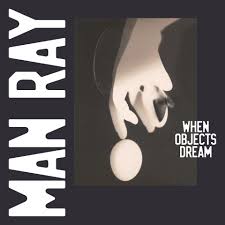
07 Nov TIO NYC: Man Ray, Frick & Eats!
One choice is to remain blissfully blind in a world bleached of truth. Another is to pursue truth and beauty as a workaday routine. No biggie when visiting New York’s cultural scene, of and in itself an act of aggression against the status quo.
First stops, the Met’s Man Ray show and the renovated Frick Museum. Also a restaurant find on the Upper West Side.

Image courtesy Circle Line Cruise
Man Ray: When Objects Dream
The exhibition features 160 rayographs or photocoms, paintings, objects, prints drawings, films and photographs, which collectively highlight the American artist’s innovation, specifically a type of camera-less image, in the context of the artist’s most important works.
Open through February 1, 2026.



A master of experimental mediums and an innovator in fashion photography, Man Ray spent his career fighting the formal constraints of the visual arts. “When Objects Dream” underlines the fact the artist’s art, like his life, was provocative, engaging, and challenging.
Although he matured as an abstract painter, Man Ray was also a filmmaker, poet, essayist, philosopher, avid chess player and leader of American modernism. In short, a prophet of the avant-garde, schooled by Dada, Surrealism, Cubism and Futurism to believe the idea motivating a work of art was more important than the work of art itself.
Maturing in the center of American modernism in the 1910s, Man Ray made Paris his home in the 1920s and 1930s. In the 1940s, however, he crossed the Atlantic again to, spend time in New York and Hollywood. But Man Ray is arguably most remembered for his photographs of the inter-war years, in particular the camera-less pictures he dubbed “Rayographs.”
Man Ray believed that “a creator needs only one enthusiast to justify him.” However, “When Objects Dream” opens the door – as it does the mind – to welcome way more than one fan. One of them, an art critic, aptly stated: “Every shot and every brushstroke of Man Ray is a tribute to experimentation, which continues to inspire and transform contemporary art.”
Thanks to this landmark show, Man Ray emerges less as a photographer — though the medium remains his greatest legacy — and more as an artist-inventor, who messed with light and objects, while laughing all the way to a distinguished place in the pantheon of art history.
Read this great – on point and well-written – review of “When Objects Dream” from The New Yorker.
The New Frick is the Old Frick – only Better
The New York Times artfully sums up the renovation of the Frick which, like the celebrated Phoenix of old, is much the same, meaning a treasure – only more wondrous in its rebirth.
“The expansion is about as sensitive and deft as one could hope for. At moments…it approximates poetry…It moves the Frick squarely into the 21st century,” The New York Times.
The renovation by Selldorg Architects and Beyer Blinder Belle transforms the museum into a “Gilded Age fantasy land,” (The Architect’s Newspaper).
According to the museum, the goals of the project were as follows:
• Opened the mansion’s second floor to the public and created a dedicated space on the first floor for special exhibitions
• Created designated, state-of-the-art spaces for education, research, and public programs
• Added visitor amenities, including a café and an auditorium
• Updated critical infrastructure, including modernizing conservation studios
• Physically united the museum and the adjacent Frick Art Research Library to foster collaboration between visitors, scholars, and staff
• Improved ADA accessibility throughout the museum and library
• Cleaned and repaired our historic façades
• Restored the 70th Street Garden
For the very first time, we the people can now access the mansion’s second floor, especially well-suited for the presentation of small-scale sculptures, ceramics, portrait medals, drawings, and paintings, including a series of mid-eighteenth-century decorative panels by François Boucher and his workshop, which were reinstalled in the room they occupied during Henry Clay Frick’s lifetime. (Although we felt we had to brush our teeth after the Boucher, whose work is as sugary sweet as cotton candy.)
A suite of three new galleries on the museum’s first floor provides dedicated space for special exhibitions, allowing—for the first time—works from the permanent collection to remain on view alongside loaned objects,
Also added, the new, larger Stephen A. Schwarzman Auditorium which enhances the Frick’s robust calendar of lectures, symposia and concerts; the Ian Wardropper Education Room; and designated space for library activities, meant to upgrade the Frick’s leadership in information science in the field of art history, including digitization.
A caveat: we missed the wall labels, which forces the crowds to turn to ubiquitous phones over and over to mine edifying gems.
And yes, another caveat and signifier of the success of the project are the crowds, so reserve your spot online in advance of your visit.
Check out Michael Kimmelson’s gem of a review in The New York Times.
Restaurant recommendation: Sempre Oggi, 164 West 75th Street

Sempre Oggi—“Always Today”— bills itself as a “contemporary Italian restaurant devoted to the art of living well, one meal at a time. Rooted in the wisdom of the Italian countryside, the mindfulness of the yogis of Ojai, and the elegant focus of modern design, our philosophy is simple: every day deserves to be celebrated.”
Sounds a bit too granola for you? Well that is one thing that is not on the menu.
Though true, feel free to ignore the promotional lingo. Go for the fabulous food on the ever-changing menu served in a quietly elegant, expansive, warm, quiet space, one which encourages conversation. (Yes really. ) The service is also noteworthy: attentive, yet unobtrusive in this contemporary Italian restaurant devoted to the art of living well. One meal at a time.
Our meal?
At the suggestion of our waitress, the specials of the evening: For starters we shared a caesar salad, followed by roasted chicken with trumpet mushrooms – the place sports a special oven solely dedicated to roasting – and a bronzino in a caper sauce which came deboned, so no fuss, no muss. The sides? Roasted broccolini, fried potatoes coated with parmesan cheese and roasted squash in a honey vinaigrette.
If you need more encouraging, Sempre Oggi was named to the Michelin Guide, which raved:
“Cavernous and contemporary with gold busts enhancing the space, it’s Italian in every way, especially on the menu. While they have plenty of the usual suspects, these dishes are given a bit of flair (think fresh calamari with fresh herbs and crème fraîche). Order the rigatoni for a plate of house-made pasta interlaced with crispy guanciale and sauteed onion in a roasted tomato sauce, then for dessert, go classic tiramisu for an on-point iteration in all of its fluffy, creamy delight.”


Sorry, the comment form is closed at this time.